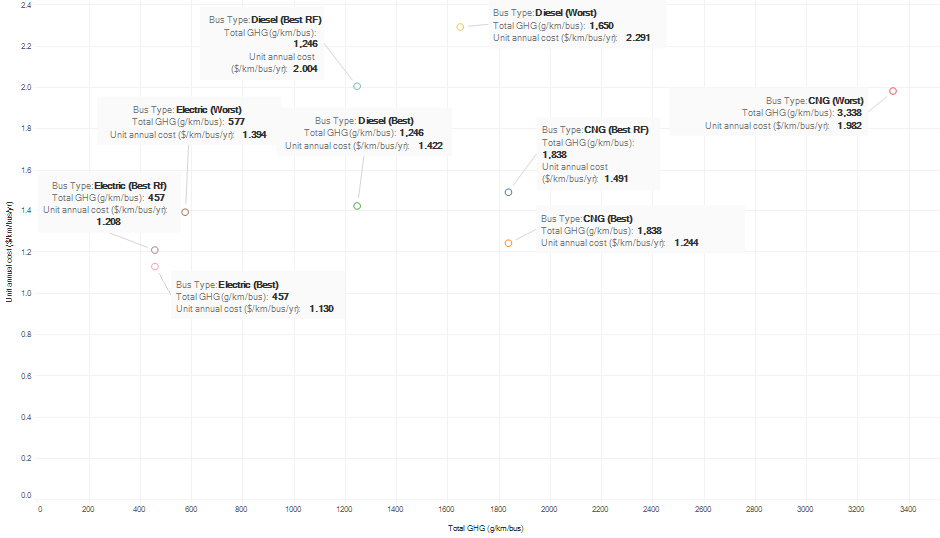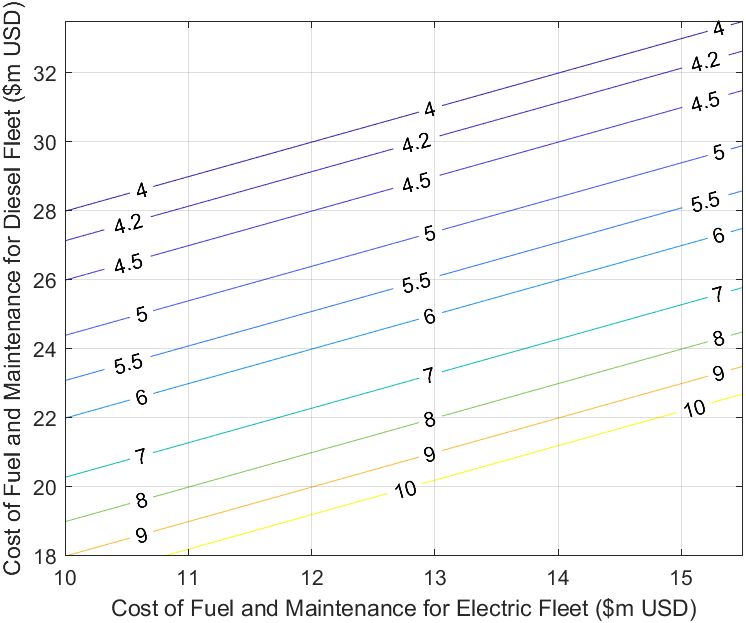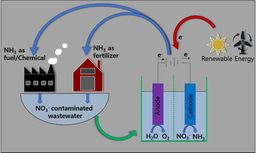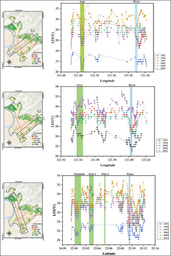An in-use comparative analysis of diesel, CNG, and electric buses for a small island developing state
Published in Earth & Environment, Sustainability, and Civil Engineering
Driving the Transition: Electric Buses in Small Island Developing States
Small Island Developing States (SIDS) often grapple with unique challenges in adopting sustainable transportation solutions. High fuel costs, limited energy resources, and vulnerability to climate change define their realities, making sustainable mobility more urgent than ever. Among the myriad of transportation alternatives, battery electric buses (BEBs) are emerging as a transformative solution. A recent study conducted in a Caribbean SIDS explores this transition, offering data-driven insights into the feasibility, environmental sustainability, and economic viability of BEBs compared to diesel and compressed natural gas (CNG) buses.
Why Focus on SIDS?
SIDS are uniquely constrained by their size and geographic isolation. Many of these states rely on expensive fossil fuel imports, making transportation one of the most significant contributors to greenhouse gas emissions. Transitioning to sustainable public transportation systems not only aligns with global climate goals but also strengthens local economies by reducing dependency on volatile fuel markets.
Public transportation in SIDS plays a dual role: it connects communities and fosters economic activities. However, buses fueled by diesel and CNG dominate, raising concerns about emissions, operational inefficiencies, and fluctuating costs. The introduction of BEBs in SIDS can revolutionize these systems, creating cost-efficient, environmentally friendly solutions tailored to their unique needs.
The Study: A Comparative Analysis
A recent comparative analysis utilized real-world telematics data from a pilot fleet of diesel and CNG buses operating across five representative routes in a Caribbean SIDS. The methodology integrated real-time data analysis with cost-benefit analysis (CBA), offering a realistic perspective on the performance of BEBs in similar settings.
Key Findings:
-
Operational Feasibility:
-
Approximately 80% of daily bus routes in the study were within the range of a representative BEB with a single charge (250 km). This highlights the feasibility of overnight depot charging for most routes.
-
High-demand routes occasionally exceeded this range, necessitating opportunity charging. This requires strategic infrastructure planning but remains manageable.
-
-
Economic Viability:
-
Despite higher initial costs, BEBs demonstrated significant long-term savings due to lower fuel and maintenance expenses.
-
The study’s financial model revealed competitive payback periods of 4–4.5 years for BEBs compared to diesel fleets, making them economically attractive in the long run.
-
-
Environmental Benefits:
-
BEBs reduced greenhouse gas emissions substantially compared to diesel and CNG alternatives. Even with electricity sourced from a mixed grid, the emissions were markedly lower.
-
By mitigating local air pollutants such as NOx and PM, BEBs improved air quality in dense urban areas.
-
A Closer Look: Energy and Cost Analysis
Range and Charging
With a 250 km single-charge range, BEBs were suitable for most routes in the study. For the remaining 20%, the deployment of opportunity charging infrastructure—with charging windows of 1–1.5 hours—ensured operational consistency. This strategic approach underscores the importance of tailoring solutions to specific regional needs.
Electricity Rates and Charging Strategies
Electricity costs in SIDS are typically higher than global averages due to reliance on imported fuel for power generation. The study evaluated different tariffs, demonstrating that ‘Time of Use’ tariffs could significantly reduce energy costs if charging schedules are optimized for off-peak hours. Investments in energy infrastructure, such as transformers for charging networks, also contributed to cost savings over time.
Lifetime Costs
Over a 15-year operational lifespan, BEBs consistently outperformed diesel and CNG buses in terms of total cost of ownership. Even in worst-case scenarios, BEBs remained competitive due to their reduced operational expenses. For example:
-
Diesel fleets were estimated to cost $78.9 million more than BEB fleets over their lifetime.
-
CNG fleets incurred an additional $46.6 million compared to BEBs.
Environmental Metrics
The study’s environmental analysis revealed that BEBs offered the lowest greenhouse gas emissions per kilometer. Diesel and CNG buses, while improving in efficiency, were unable to match the clean operation of BEBs, particularly in SIDS’ sensitive ecosystems.
Policy Implications for SIDS
This research offers valuable insights for policymakers aiming to adopt sustainable transportation in SIDS. The findings underscore the need for:
-
Strategic Investments in Infrastructure:
-
Establishing depot charging stations and opportunity charging hubs tailored to regional transit needs.
-
Incorporating renewable energy into the grid to further reduce emissions from BEBs.
-
-
Incentivizing Electric Mobility:
-
Offering subsidies for the initial procurement of BEBs.
-
Promoting favorable electricity tariffs for public transport operators.
-
-
Adopting Data-Driven Approaches:
-
Utilizing telematics and real-world data to refine fleet management and optimize operational efficiency.
-
Collaborating with stakeholders to monitor performance and ensure continuous improvement.
-
-
Public-Private Partnerships:
-
Engaging private stakeholders to share the cost of infrastructure development.
-
Leveraging international financing mechanisms to support upfront investments.
-

Figure: Unit Annual Cost (USD$/bus/km/yr.) Vs Total GHG emissions (g/km/bus)

Contour plot: Payback period for initial cost of BEB Fleet (with charging infrastructure).
Charting the Path Forward
The transition to electric buses in SIDS is not without its challenges, but the benefits far outweigh the costs. This study’s robust methodology—anchored in real-world data—provides a blueprint for other SIDS to follow. By demonstrating that BEBs are operationally feasible, economically viable, and environmentally superior, it paves the way for more sustainable and resilient transportation systems.
Future research could delve deeper into the integration of renewable energy sources, the impact of BEBs on grid stability, and the scalability of such transitions across different SIDS. By addressing these questions, SIDS can continue to lead the charge toward a cleaner, greener transportation future.






Please sign in or register for FREE
If you are a registered user on Research Communities by Springer Nature, please sign in